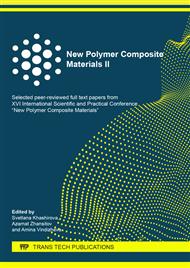p.76
p.82
p.88
p.93
p.101
p.107
p.112
p.119
p.129
Medical Nonwovens: Effects of Radiation Sterilization on Bursting Strength
Abstract:
The production of nonwovens over the past few years remains one of the most promising areas in the textile industry. This is due to the short cycle of production of such materials from raw materials to finished products and the ability to produce at a low cost a wide range of materials for both household and technical use. In particular, non-woven materials are widely used for the manufacture of disposable medical clothing and underwear. An important characteristic for surgical clothing is an indicator of bursting strength. This study simulates material deformation similar to elbow pressure when bending the arms or knee when bending the legs. Since the lower part of the sleeve of the product refers to the critical zone of the product, i.e. to the zone most likely to be involved in the transfer of infectious pathogens to or from the wound, the sterile product must have a significant margin of bursting strength. The effect of the absorbed dose of electronic radiation on the strength during the bursting strength of nonwoven medical material of SMS design with a surface density of 35 and 50 g/m2 obtained using the spanmelt technology was studied. It is shown that electronic radiation significantly reduces the resistance of the nonwoven to bursting strength. With an absorbed dose of 40 kGy, the material no longer meets the requirements for surgical clothing and linen by regulatory documents. For non-woven materials obtained using spanmelt technology, the bursting strength rate is even more sensitive to the action of ionizing radiation than the tensile tensile load, therefore, this indicator is recommended to be used as a characteristic indicator of radiation resistance.
Info:
Periodical:
Pages:
101-106
Citation:
Online since:
October 2020
Price:
Сopyright:
© 2020 Trans Tech Publications Ltd. All Rights Reserved
Share:
Citation:


